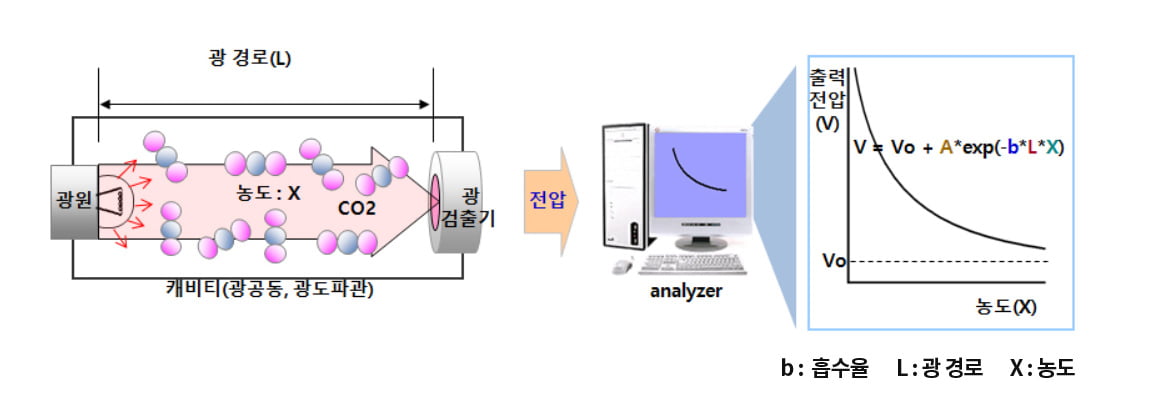
- Technology
- Principles of NDIR Technology Notice: Undefined offset: 3 in /ii_eltsensor1/www/html/_skin/layout/inc_navigation_middle.php on line 88
Principles of NDIR Technology
NDIR GAS SENSOR SPECIALIST

Feature of NDIR Technology
| Category | NDIR Sensors | Touch Sensors |
|---|---|---|
| Basics |
Density is measured by assessing the optical absorbance of different types of gases absorbing infrared rays of specific wavelengths. |
Density is measure by assessing chemical changes that occur upon coming in contact with gas molecules. |
| Types | Non-dispersive infrared Type Photo-acoustic Type |
Semi-conduct and solid-electrolyte Type Electro-chemical Type |
| Difference | High accuracy by only detection of specific gases. Not influenced by other vapors and VOC gases. (Measure the energy difference before and after CO2 or CO absorbed its corresponding NDIR light frequency) |
Not chosen for most application because its inaccuracy and unstability are get unbearably worse with time due to too limited and vulnerable technological ground. |
| Strength | Longevity over 10 years, high accuracy, no interference | Small size and low price in sensor elements |
| Weakness | Relatively larger size and higher price, however, the total price has shown a lower in long life time | Short life time in 2~5 year, low accuracy, interfered by other gases. |
| Evaluation | As average prices of NDIR sensors get lower and the more touch sensors are getting replaced. | |
Principles of NDIR Gas Sensors

- What is a Non-Dispersive Infrared (NDIR) Gas Sensor ?
-
- Using the characteristics which absorb the specific wavelengths of infrared rays, NDIR sensors measure the ratio of absorbed infrared rays and compute the density of gases. (ex. CO2 absorbs 4.26㎛ and CO absorbs 4.64㎛)
- NDIR technology is highly regarded as the most excellent principle in gas sensing field with high accuracy and an extensive longevity.
- NDIR technology have been recently applied in mass-producing low-cost CO2 sensors for everyday use.
Core technology of ELT SENSOR
-
01
- Optical Cavity Design Technology
- Optimized Cavity Design Technique
- Integration Technology of maximum Optical Efficiency
- Miniature Design technique
- Low Concentration Gas Detection Technology
-
02
- Circuit Design Technology
- Low noise and stabilized circuit Fabrication Technology
- Long-term reliable sensor development Know-how
-
03
- Firmware and Evaluation Software
- Sleep mode control logic for Low power Consumption
- Evaluation Board Control Software
- Monitoring software and Communication Protocol
-
04
- Sensor Calibration Technology
- Temperature Effect Compensation and Correction Technology
- Automatic Calibration Technology (ACDL)
- Manual Calibration Technology (MCDL)
- Easy Sensor Management Technology
-
05
- World’ 1st class sensor development
- Incomparable High Accuracy
- World Smallest, Lightest, Most Favorable Design
-
06
- Low Power Consumption Design
- Lowest Current Consumption Design and Control
- Least Battery Consumption Design




